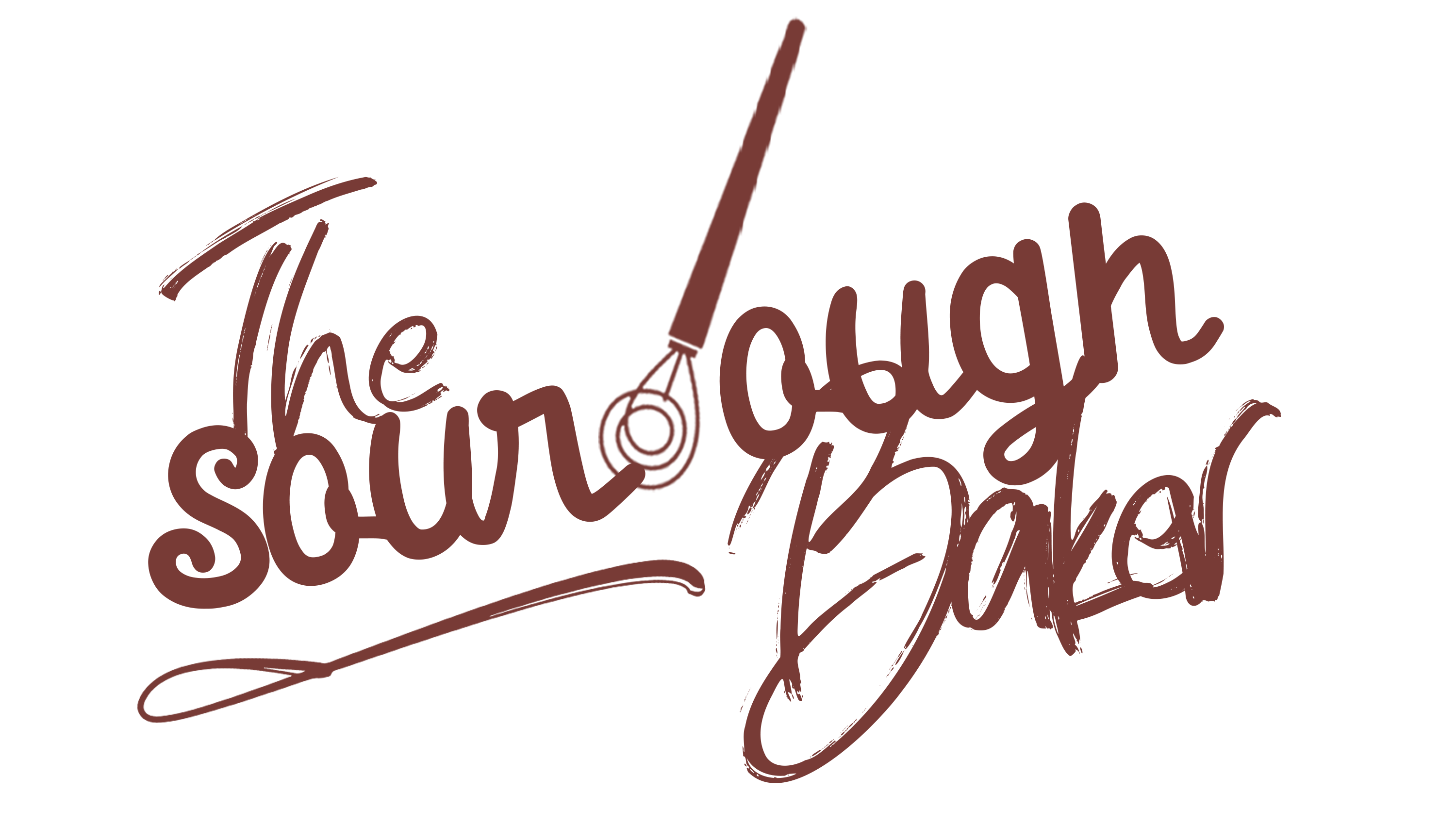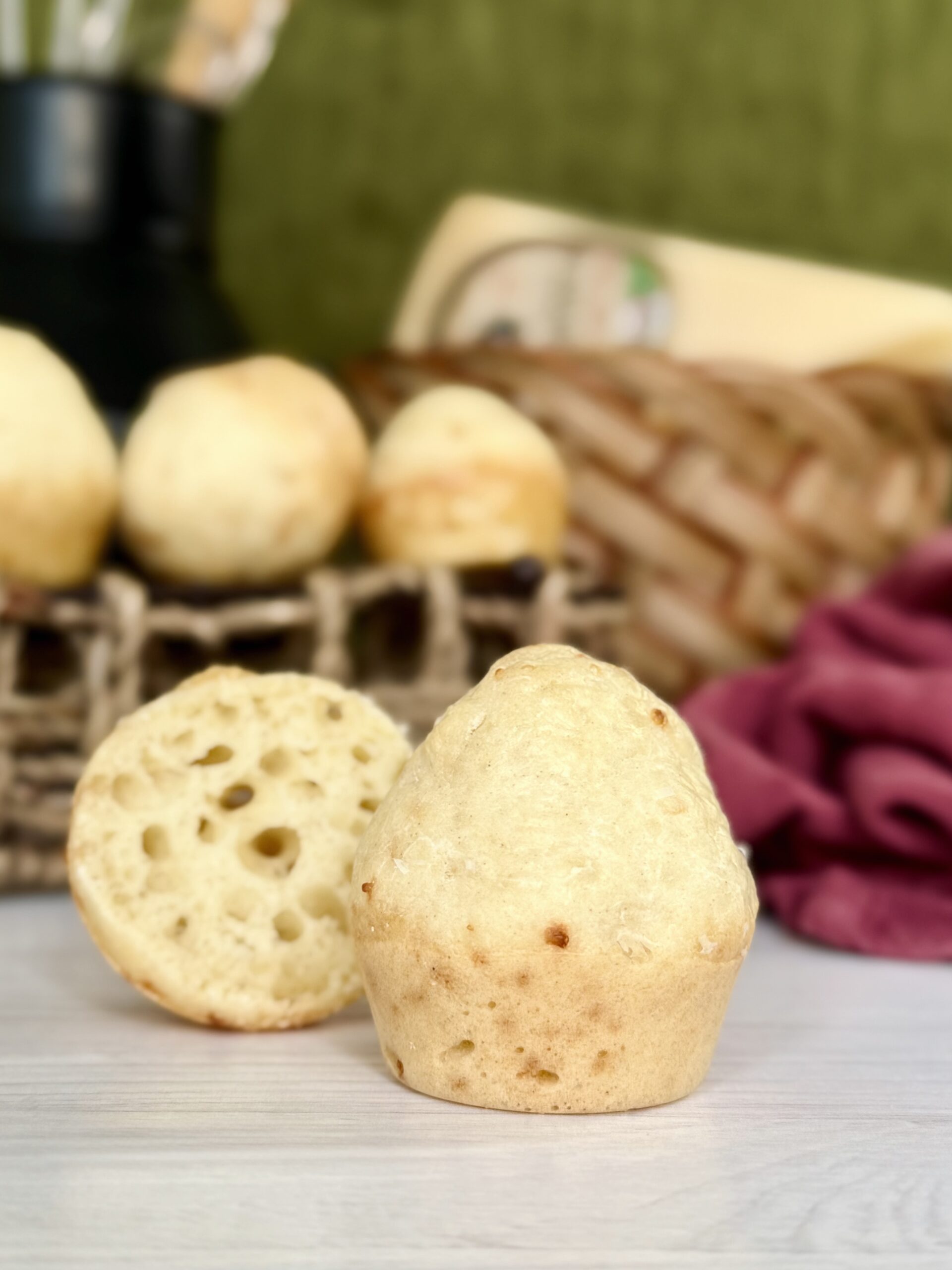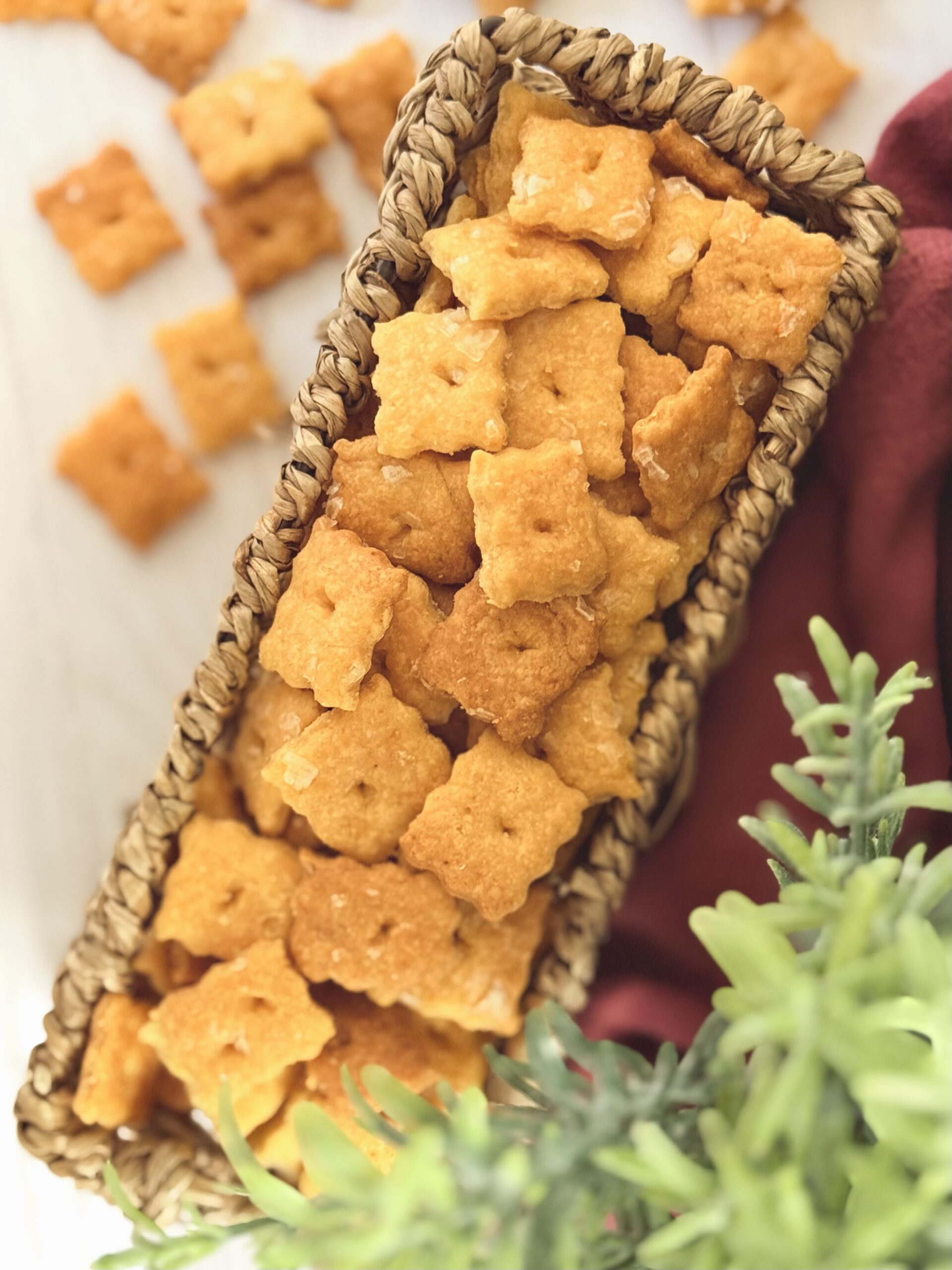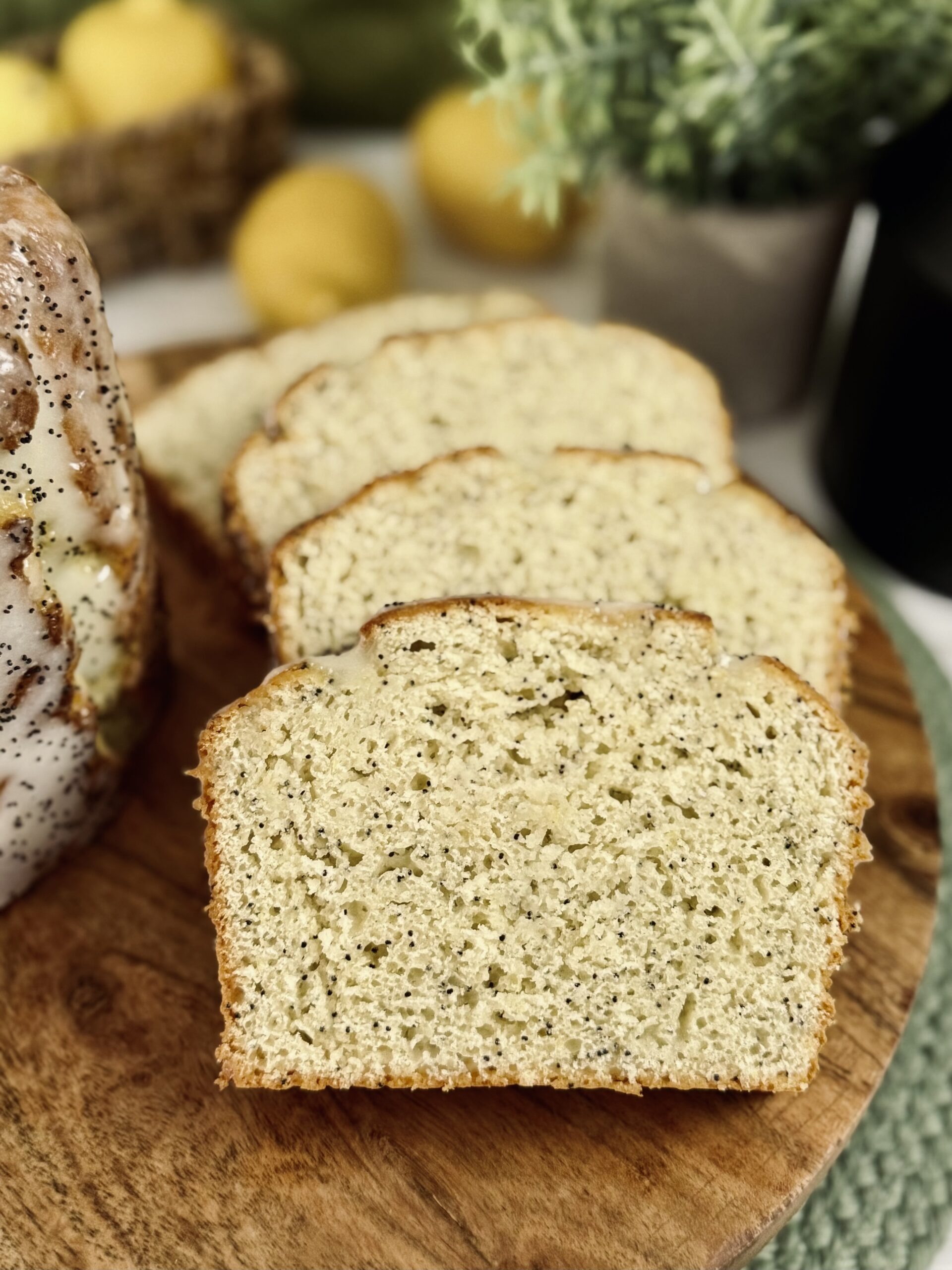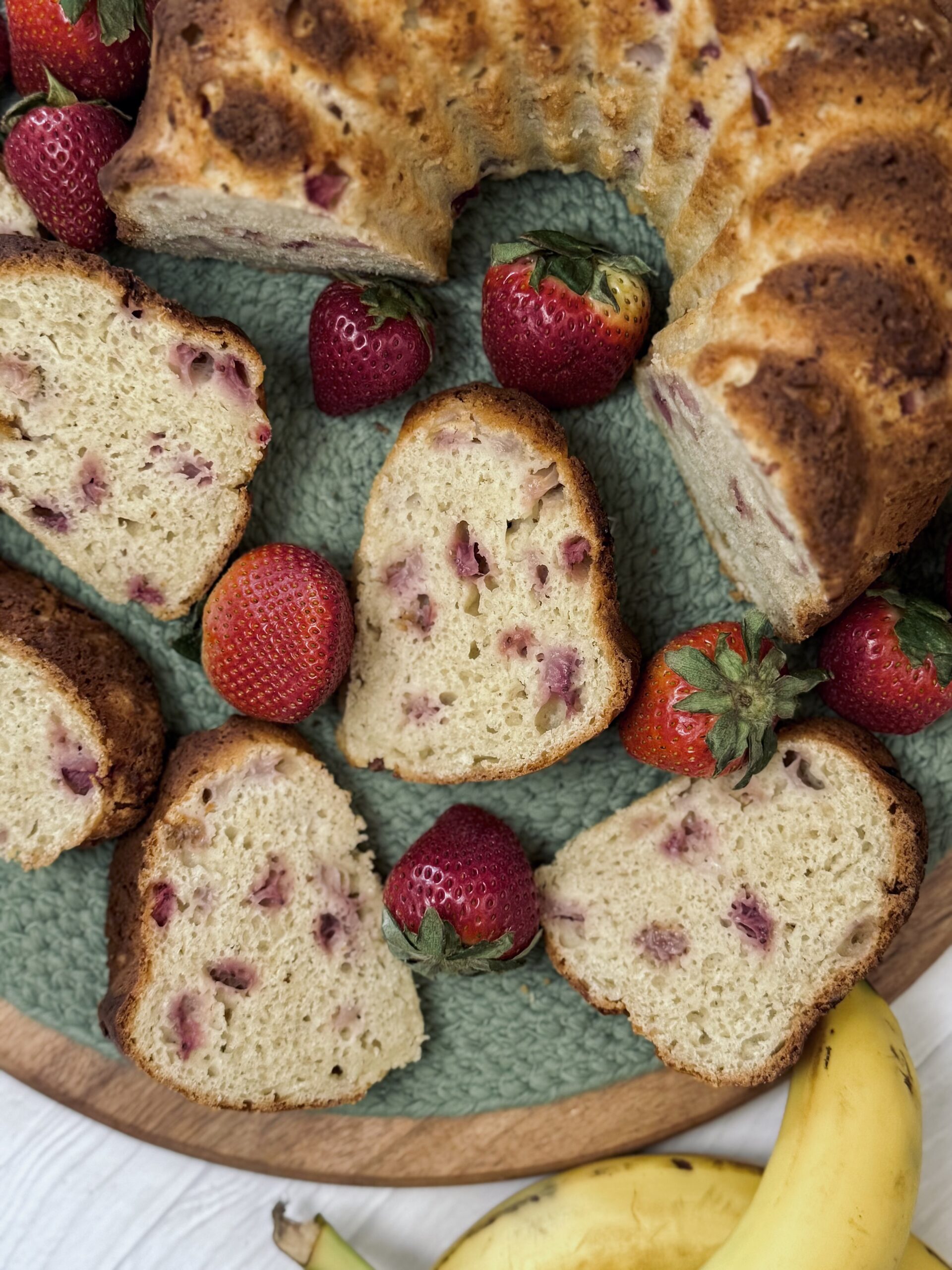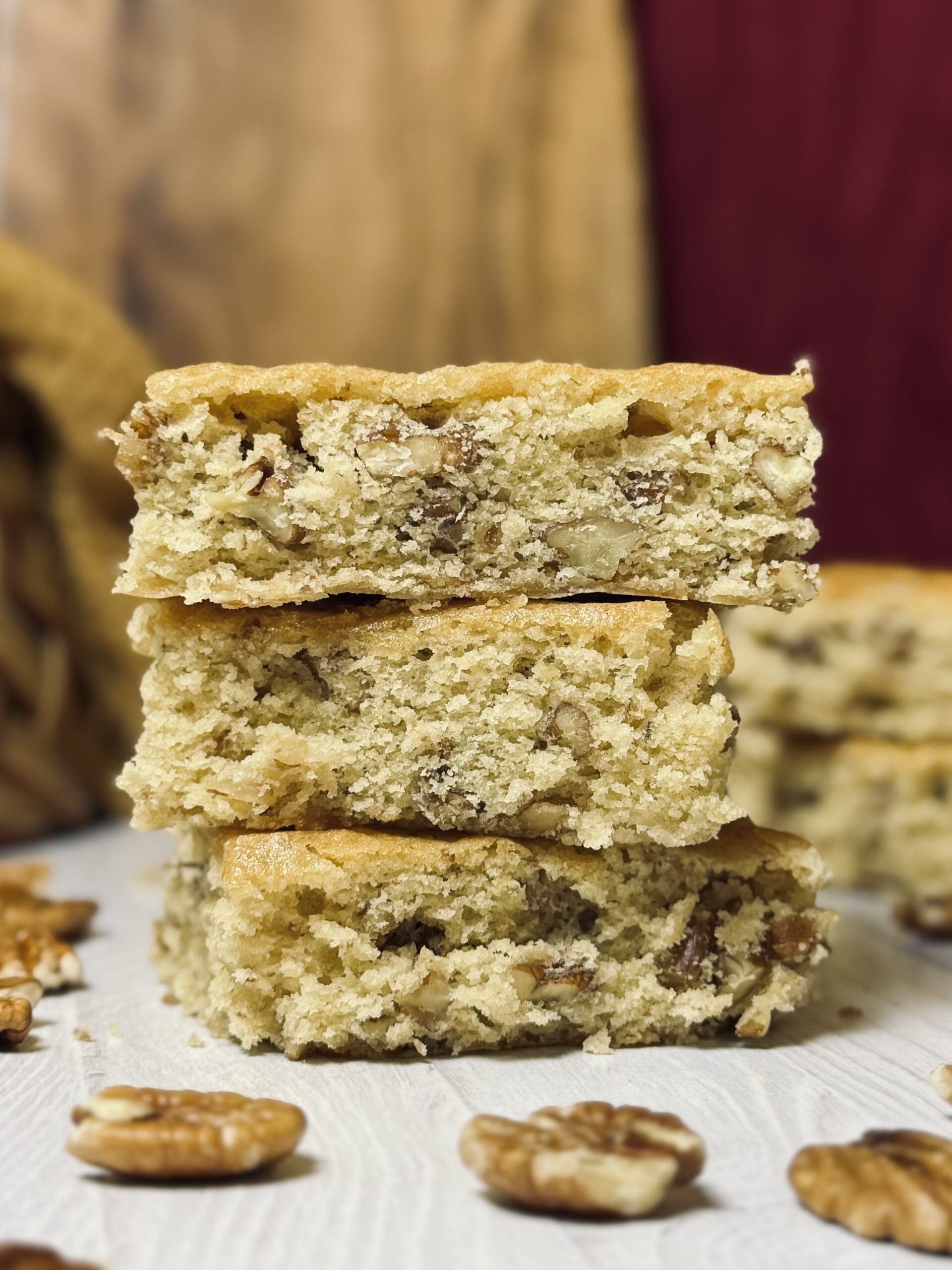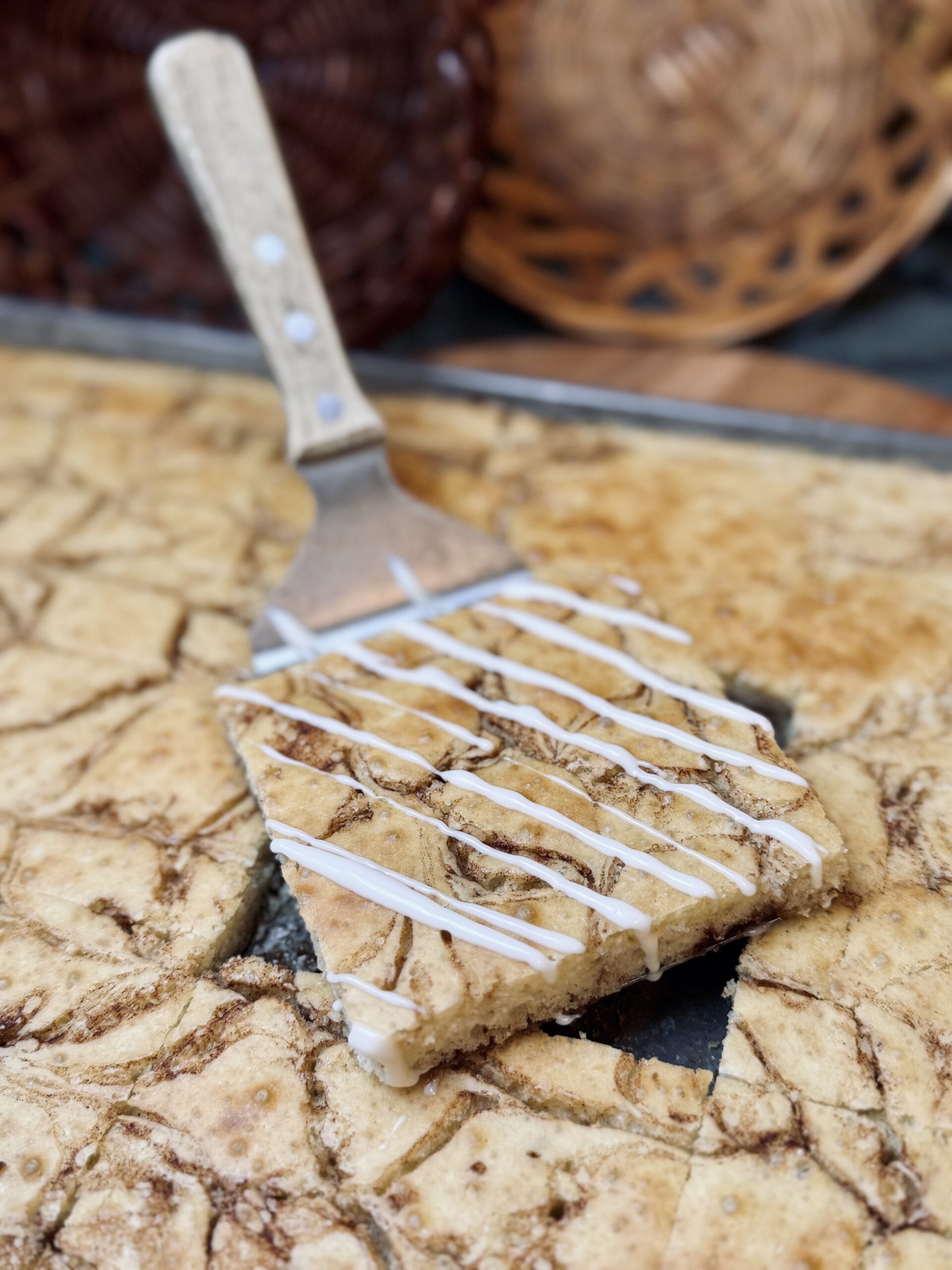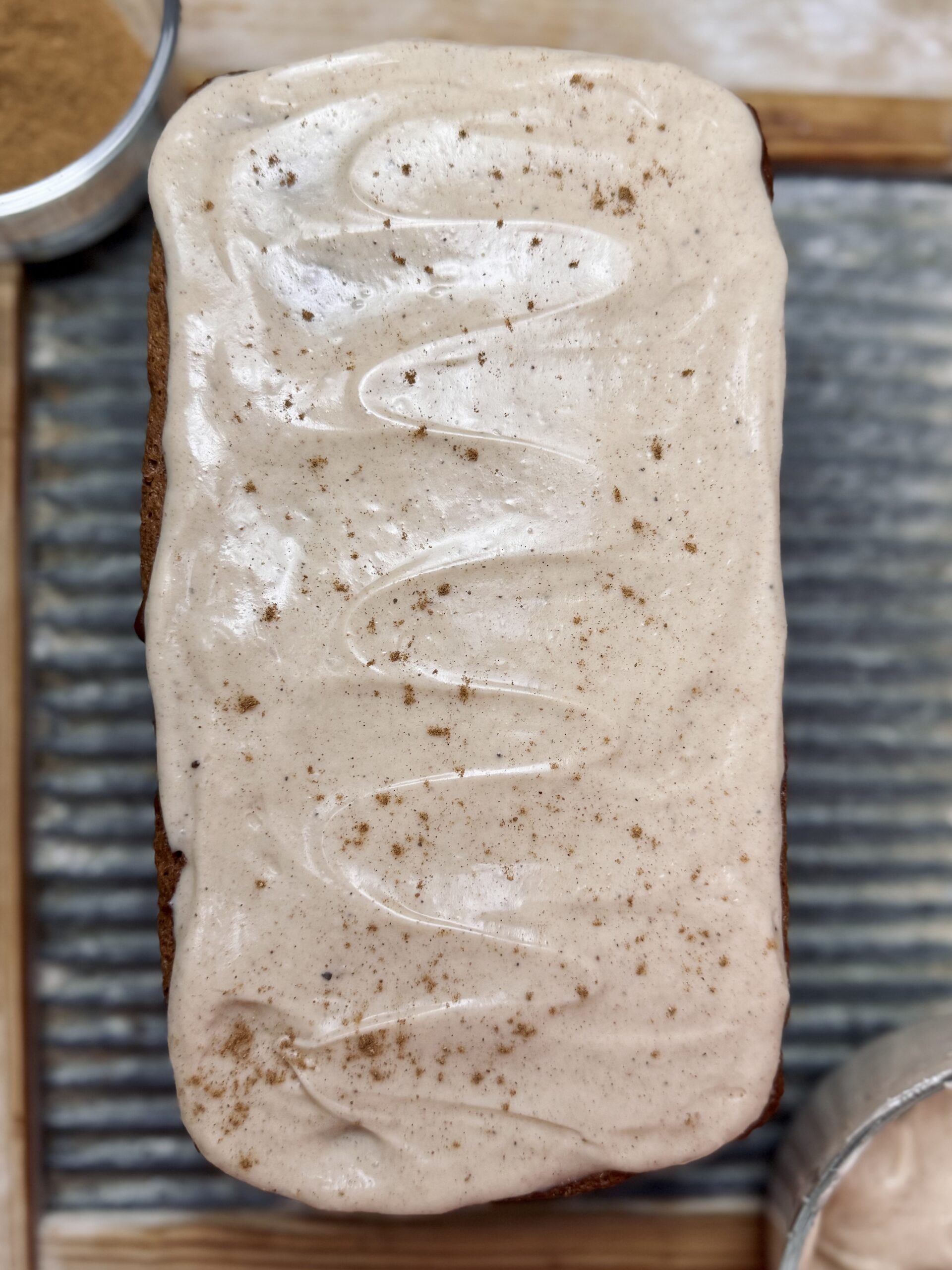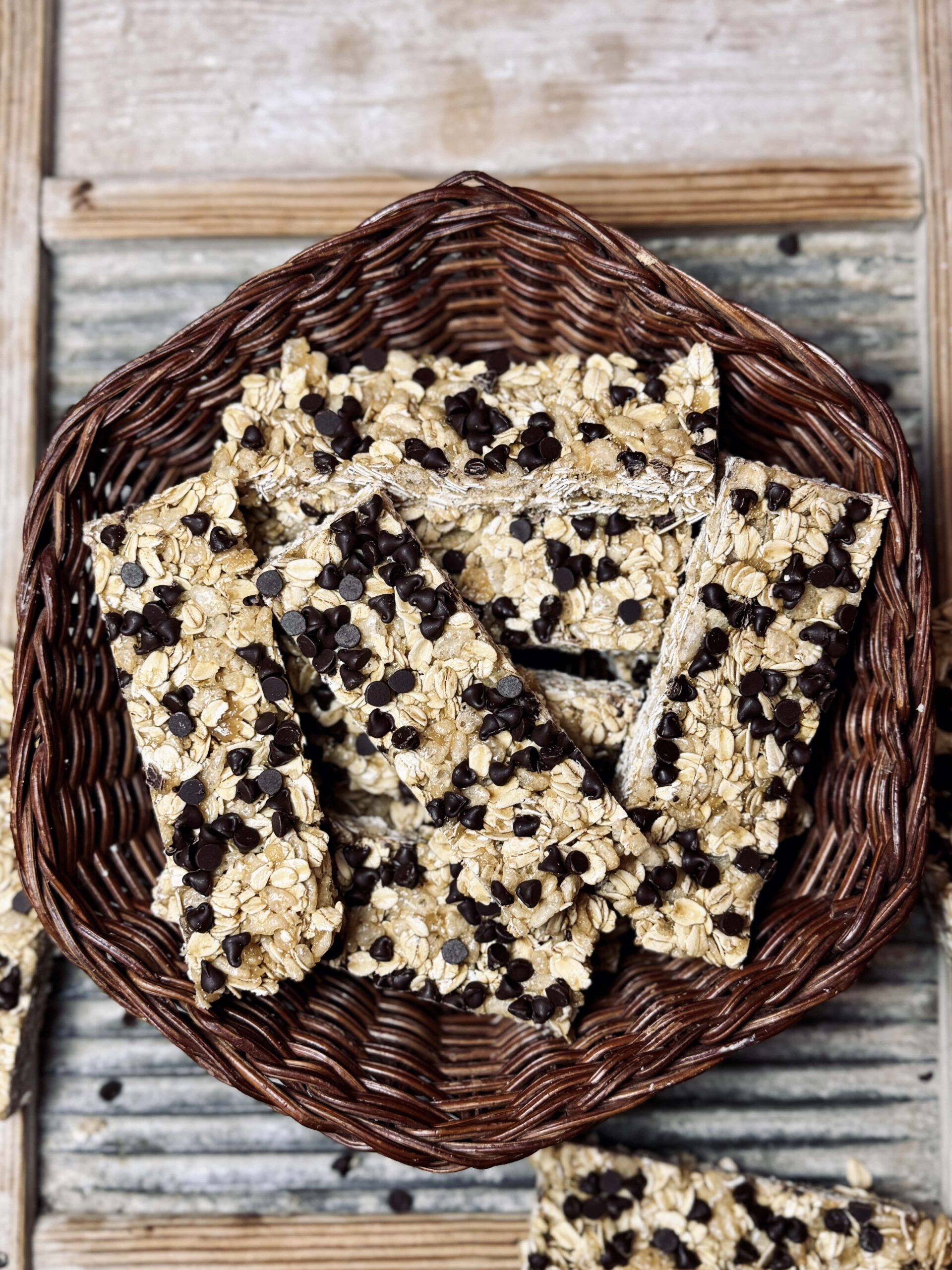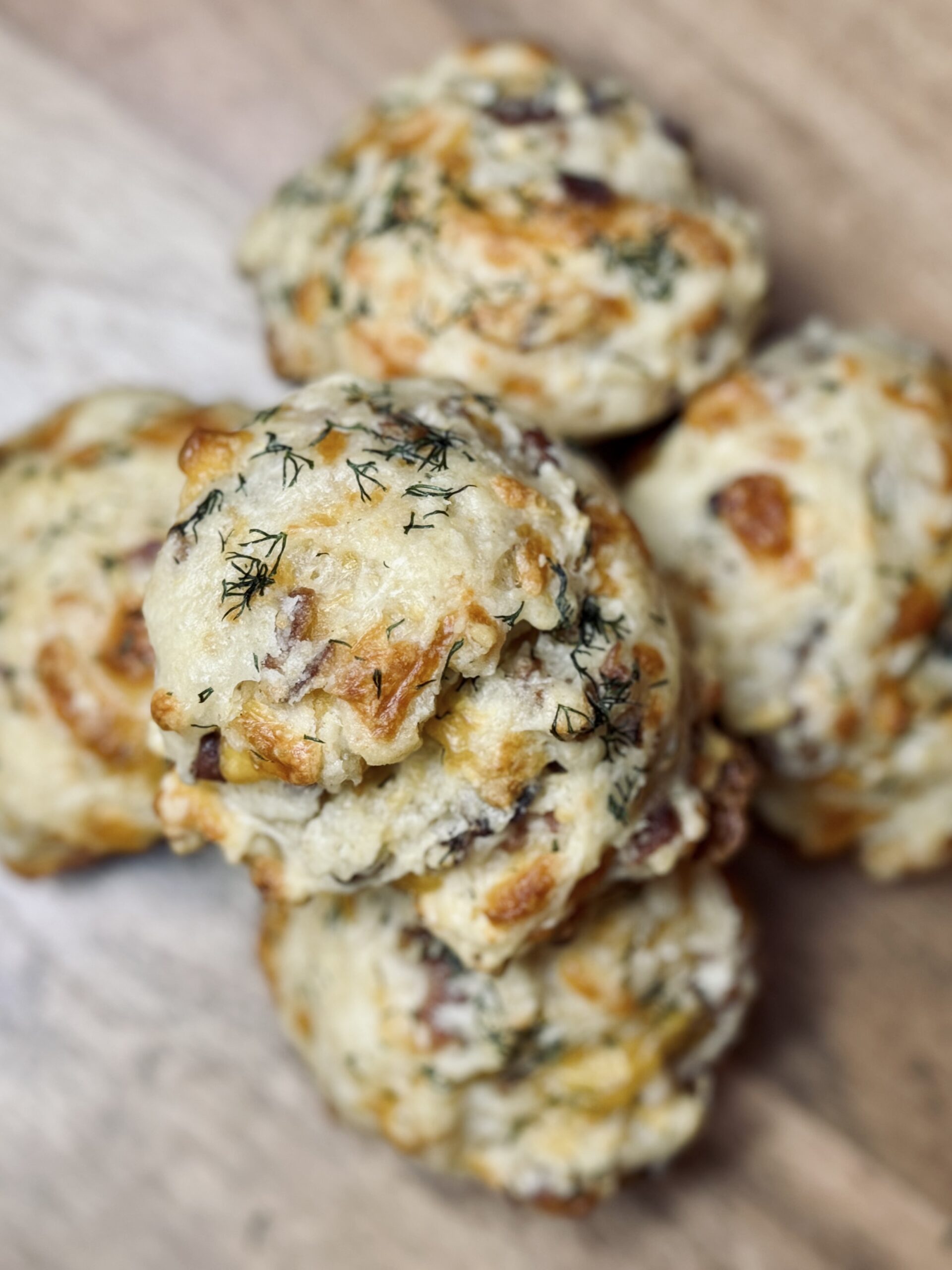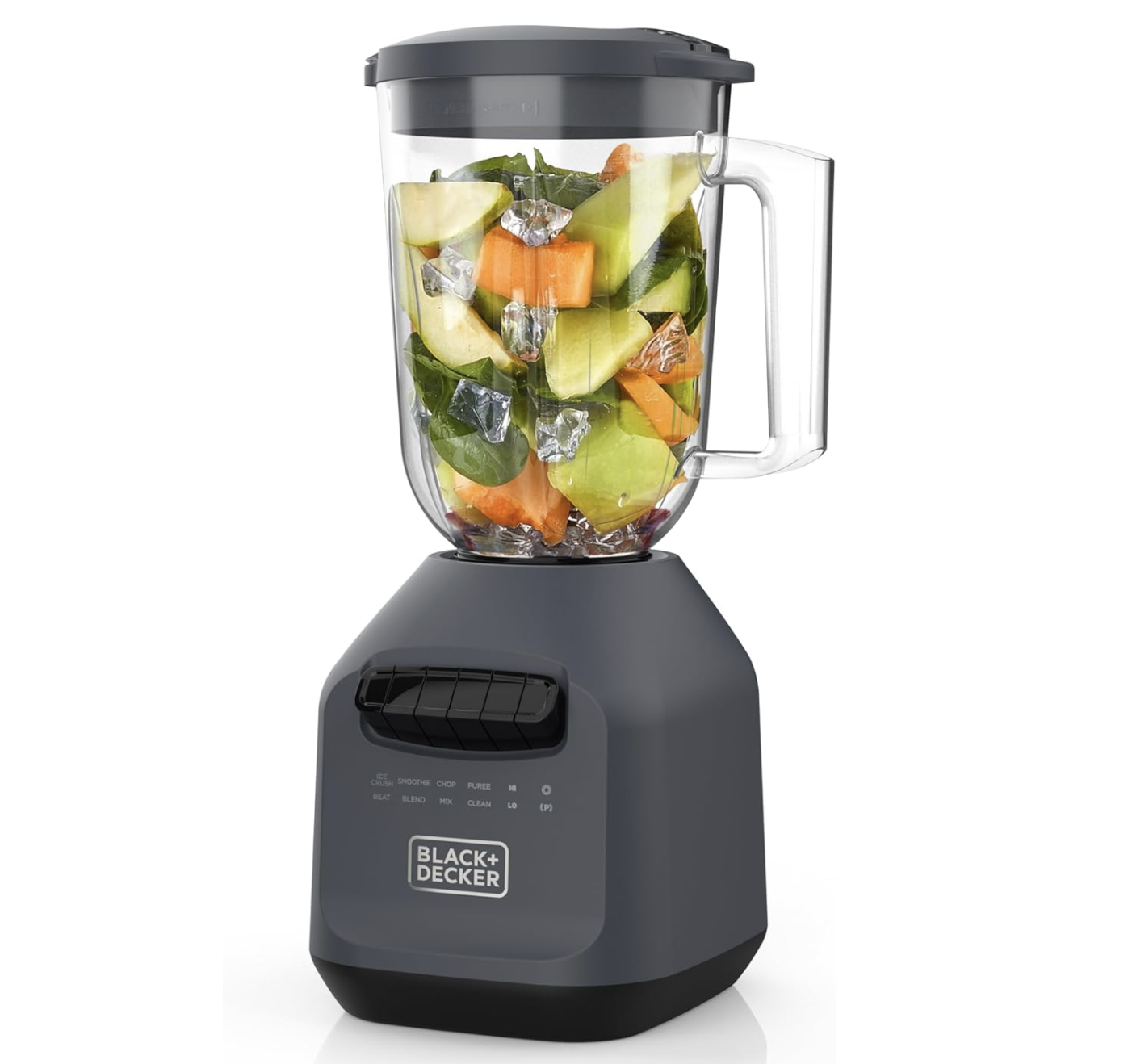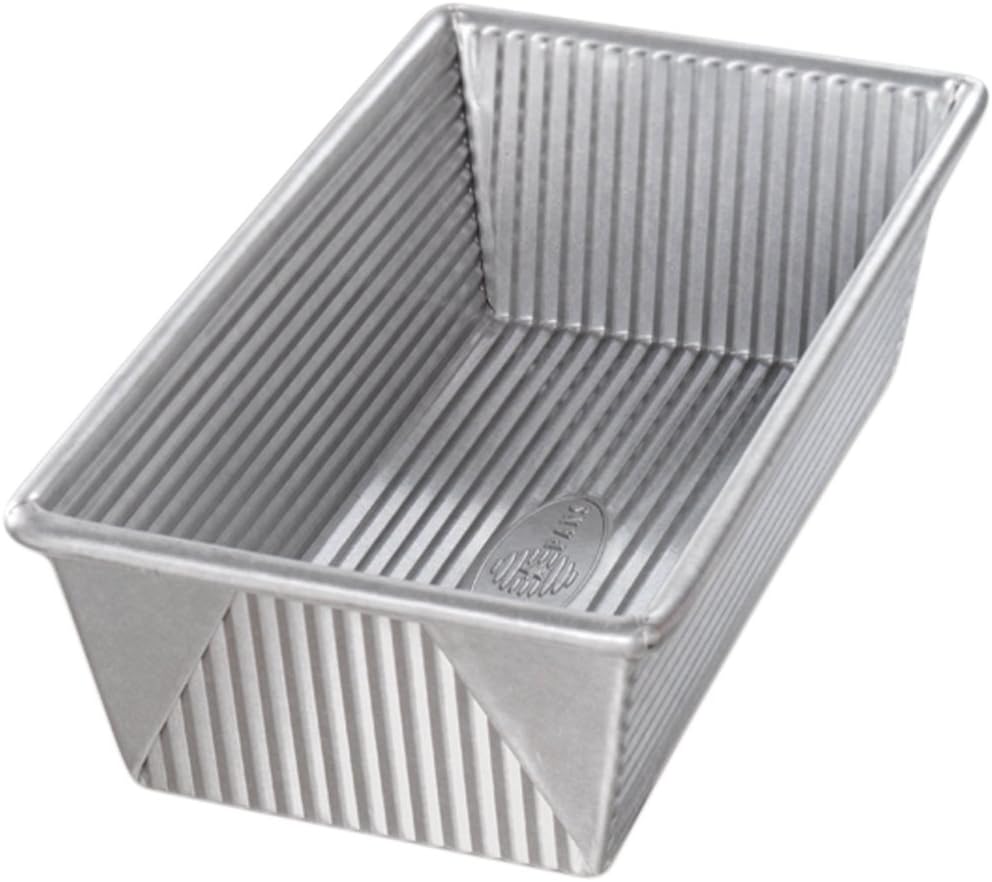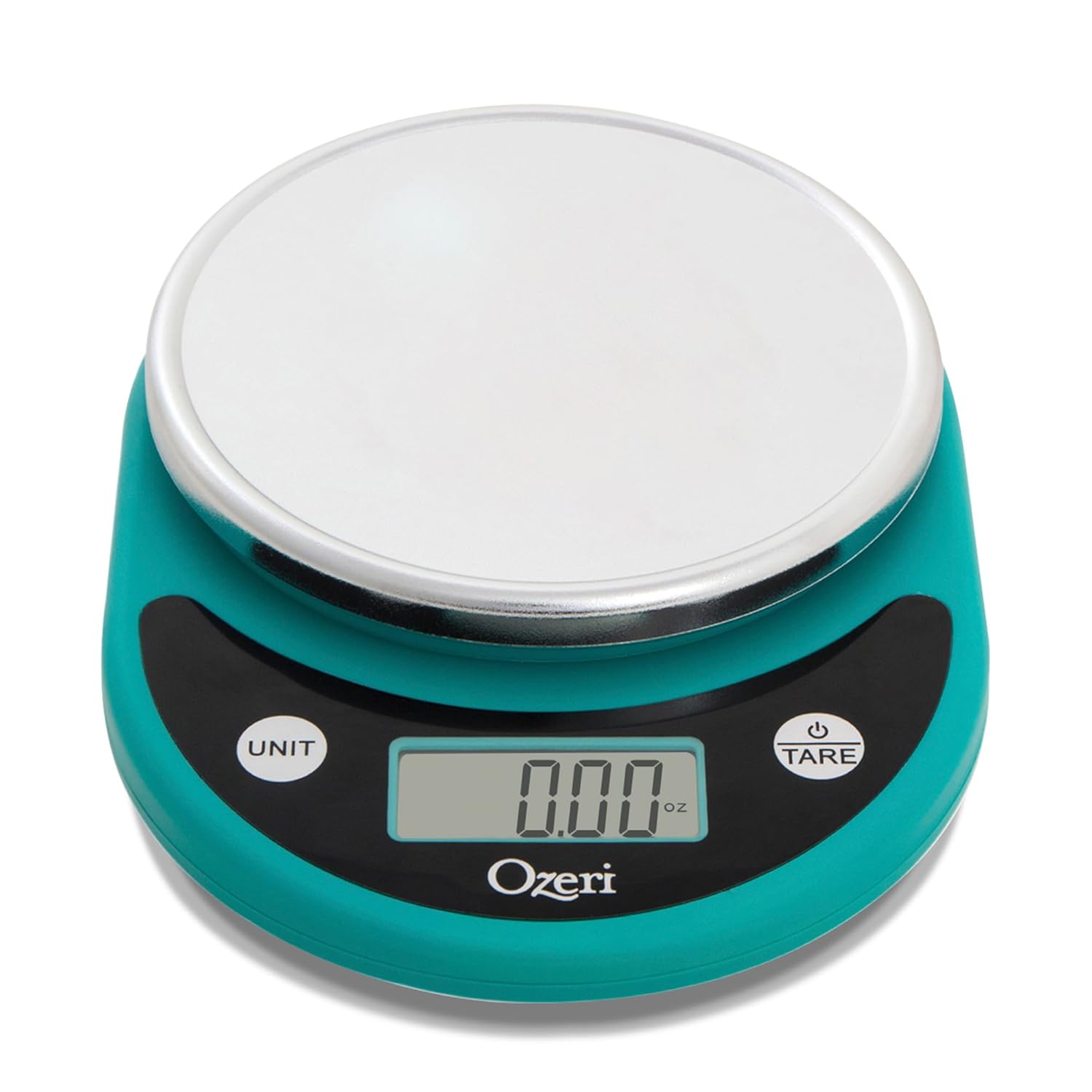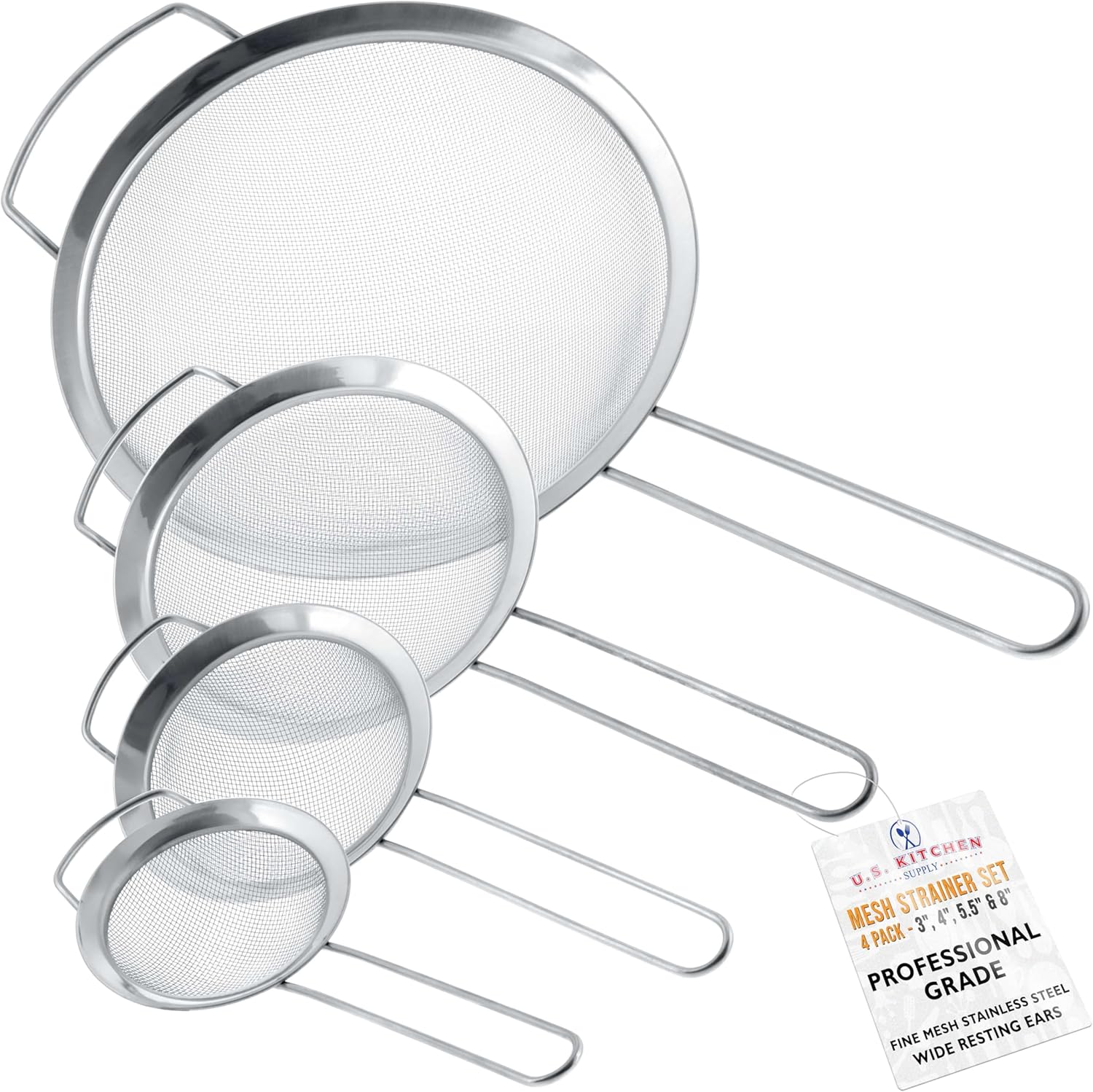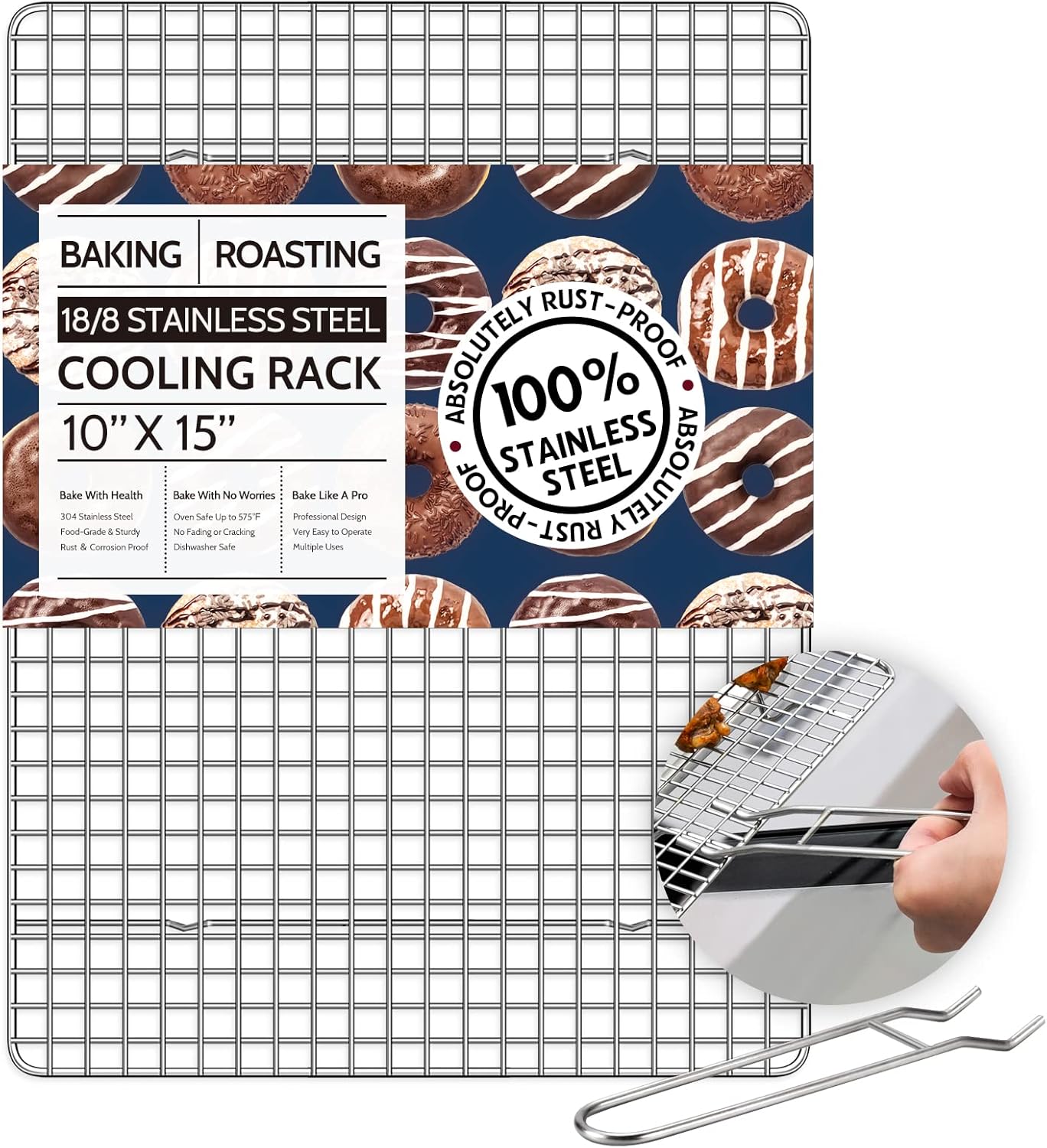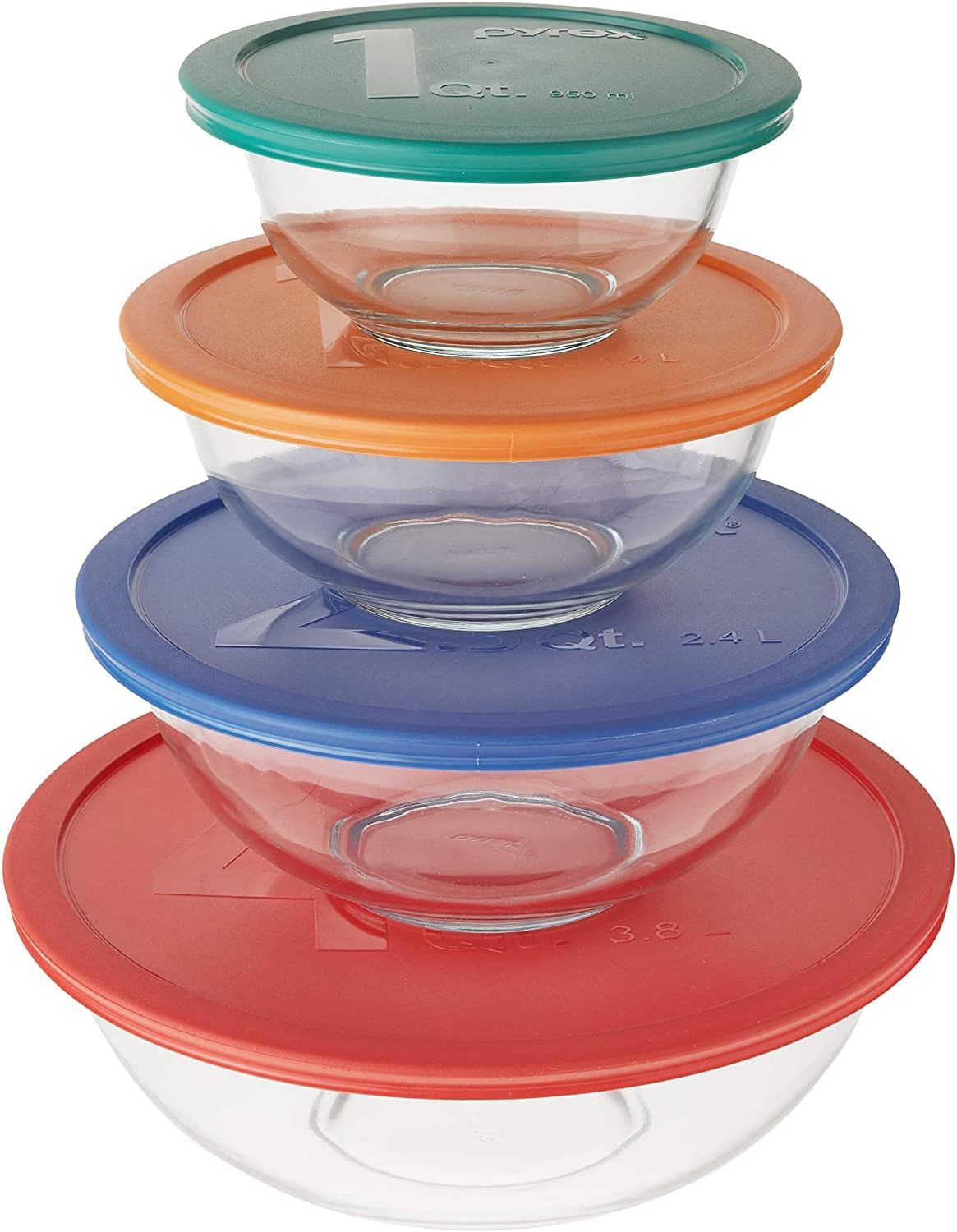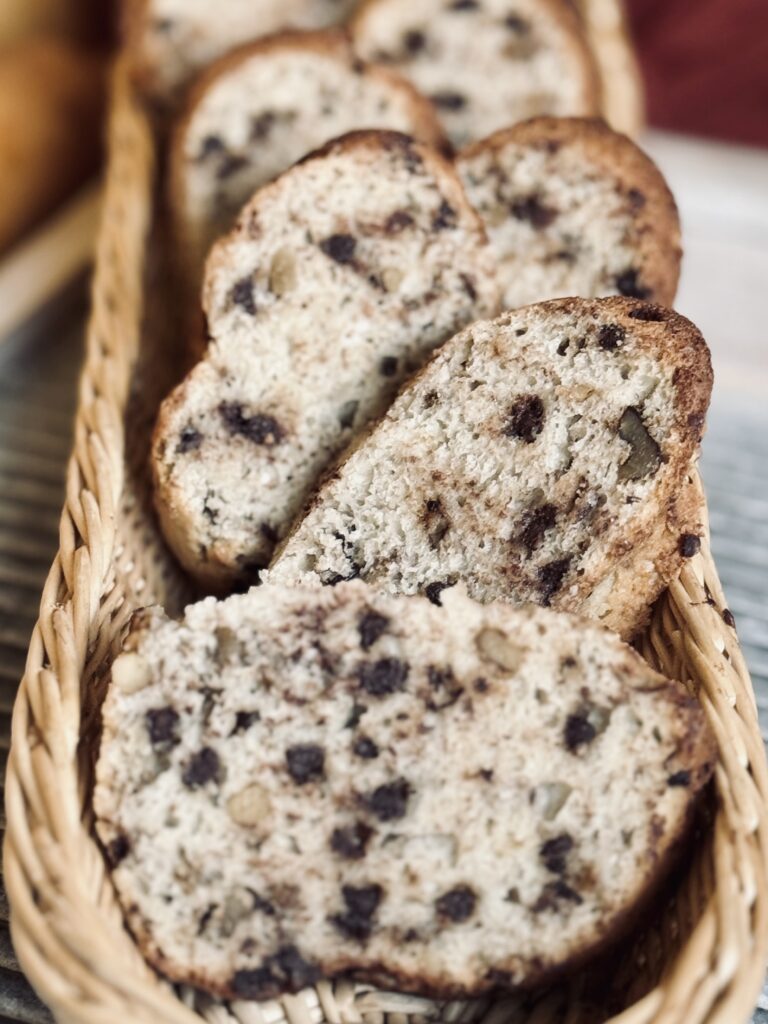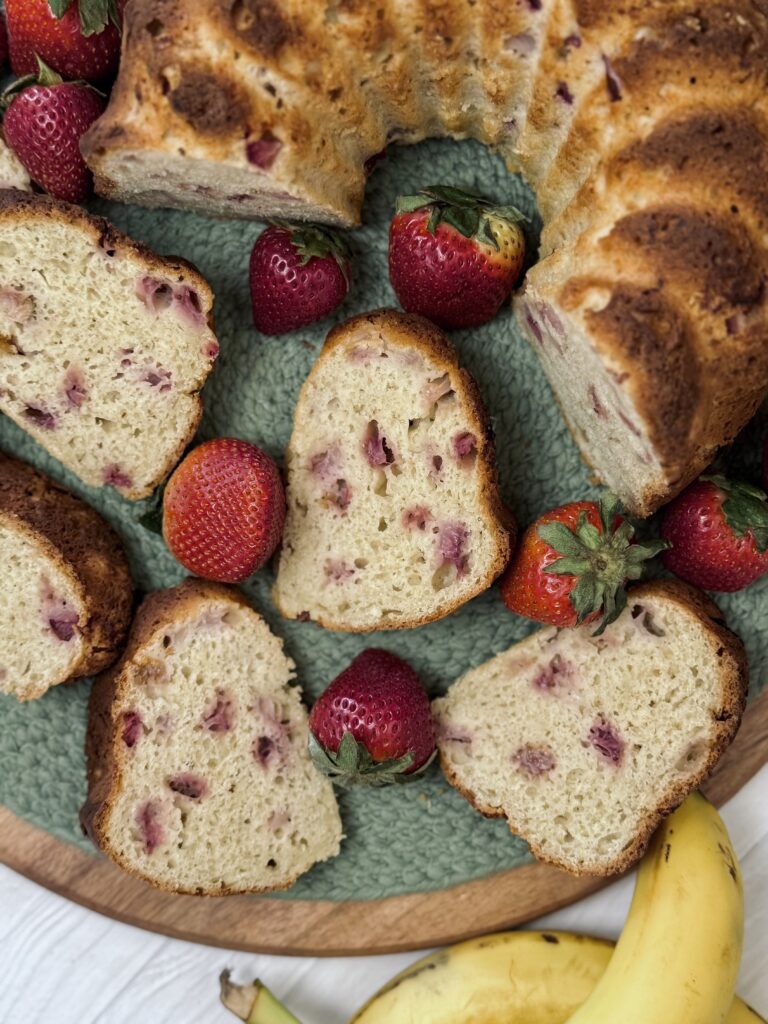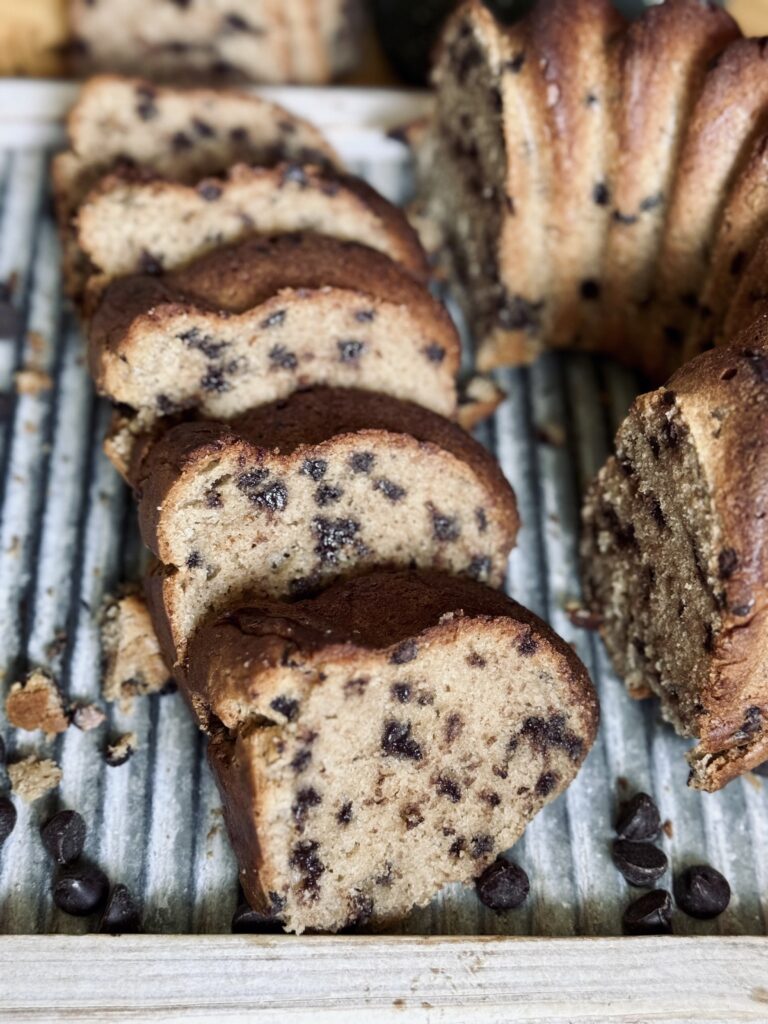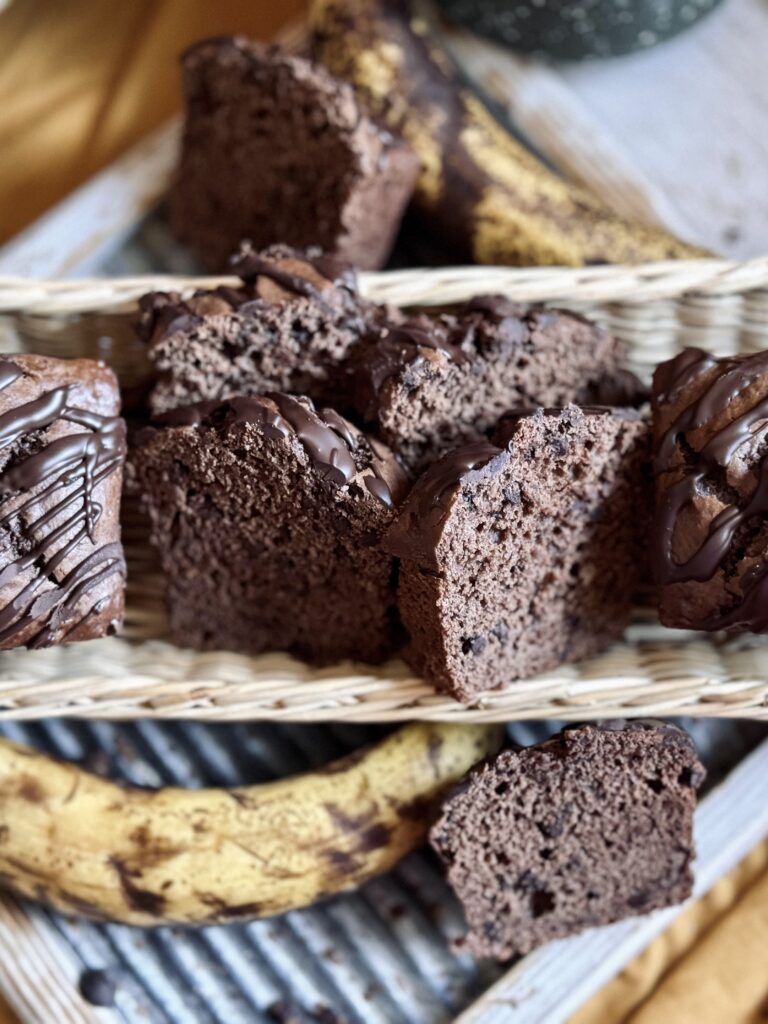About This Recipe
Love banana bread, but need a healthier take? Look no further. This version is packed with nourishing ingredients (like protein-rich cottage cheese, whole wheat flour, and natural sweeteners) so you can feel good about every bite. It’s moist, subtly sweet, and perfect for busy mornings, snack time, or even a guilt-free dessert.
What Is Banana Bread?
If you are not familiar with banana bread, it is a type of sweet, baked quick bread made with overripe, mashed bananas. It became popular in the United States during the 1930s when people wanted to use up ripe bananas instead of throwing them away. The bananas provide a natural moisture and sweetness to the bread, though sugar is still usually added to the batter. It is extremely popular in North America, but has become a classic and beloved baked good in many households across the world.
What Makes This Banana Bread Healthy?
I’ve made a few notable swaps in this recipe compared to my original banana bread. I usually love using cream cheese in the base for many reasons, but to boost the protein this time, I went with cottage cheese instead. I also swapped some of the all-purpose white flour for whole wheat flour to add more nourishing nutrients. And instead of butter, I used a healthy, neutral oil of choice, along with a natural sweetener (like maple syrup or honey) in place of white sugar.
What I Love About This Recipe
Besides using wholesome ingredients, we get to make this banana bread right in the blender—which means quick prep and easy cleanup! It’s the perfect method for this recipe, since we need to purée the cottage cheese anyway. Not to mention it helps create a super smooth, moist batter.
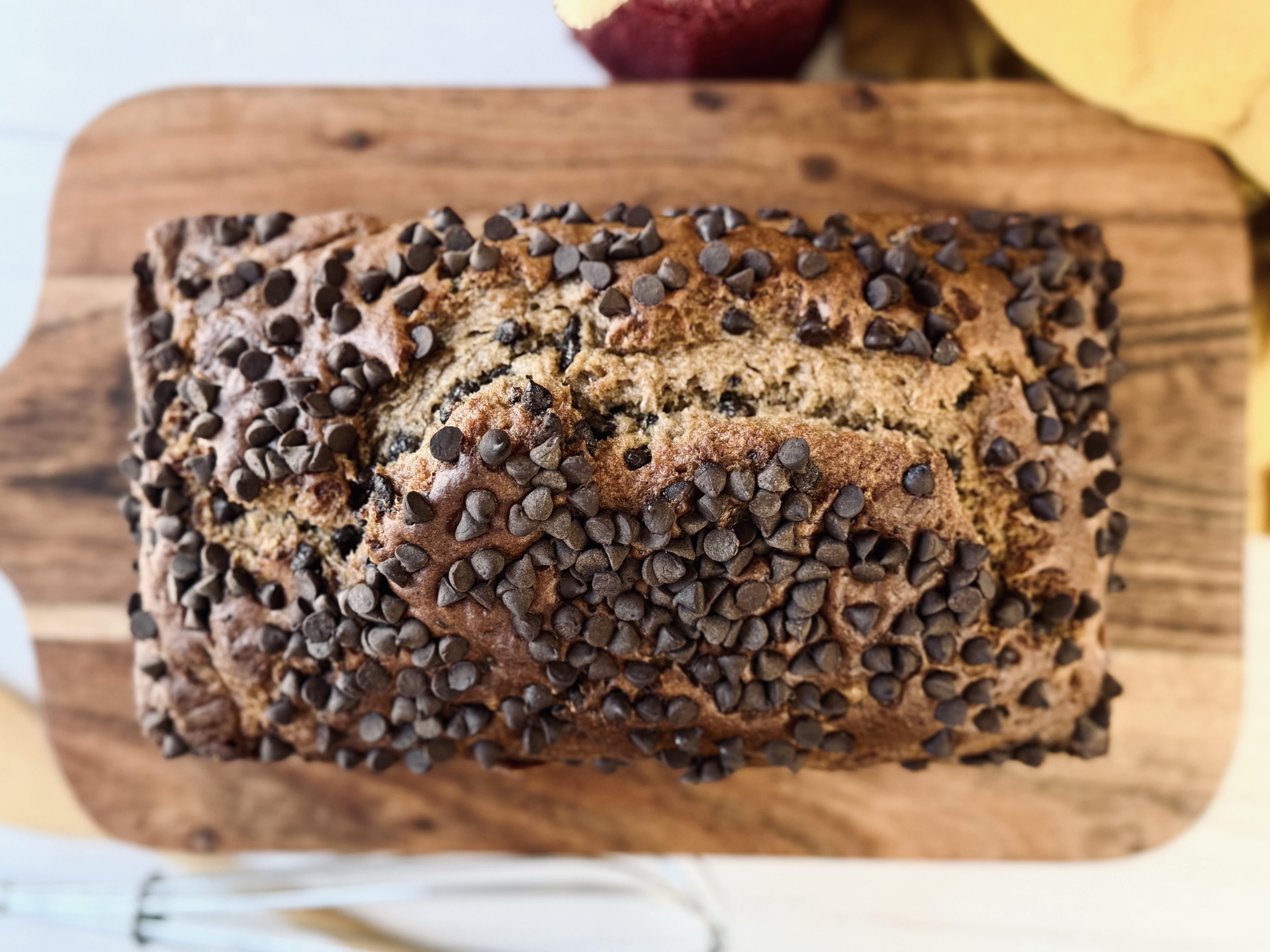
All The “Why’s”
Cottage Cheese
I normally use cream cheese in my banana bread recipes, but for this one, I was determined to up the protein. So, I opted for the current health-industry rage: cottage cheese. It’s high in protein, mild in flavor, and blends beautifully into the batter for a tender, moist crumb. If you don’t have cottage cheese, you can use an equal amount of plain, Greek yogurt or cream cheese.
Bananas
Bananas are the star of the show in banana bread; they add moisture, flavor, and sweetness. Ripe bananas are key; I like to use them when they are very dark. As bananas ripen, their starches are converted into sugars and moisture is released, which just means the older, the better. It also means that the time you use the banana in relation to its ripeness will effect the outcome of your bread, creating a wetter or dryer batter. I like to use dark, very overripe medium to large bananas, which comes out to about 260-280 grams of puréed banana.
Sourdough Discard
Since sourdough discard is simply flour and water, it adds both moisture and a bit of structure to the bread. The state of your discard, whether it’s freshly fed or a few weeks old, won’t impact the final result much, since this recipe doesn’t rely on it for rise or flavor.
I’ve adjusted this recipe to include even more sourdough discard than I do in my other banana bread recipes. The result is heavenly. Unless your starter is very acidic, you probably won’t notice a tang in this bread. You can read more about starter care and what causes acidic starters here.
Eggs
The more eggs you add to your bread, the more cake-like the bread becomes. Eggs add fluff and moisture, as well as make your bread lighter and taller, thanks to their uniquely awesome proteins. I find two eggs to be the perfect balance: it is not too cake-like, but is also not too dense.
Maple Syrup (Or Honey)
For this healthy banana bread, I’ve significantly reduced the sugar from what I typically use and swapped granulated sugar for maple syrup (a more natural alternative). While sweetness is its main role here, sugar also helps with browning, tenderizing, moisture retention, and shelf life. If you don’t have maple syrup, you can substitute honey, molasses, or even white sugar at a 1:1 ratio.
Neutral Oil
I usually reach for butter because I love the flavor, but for this healthy banana bread, I’ve opted for a neutral oil instead. Oil does a better job at locking in moisture, which is especially important when baking with whole wheat flour, as it can easily dry out your loaf if you’re not careful. Without oil, the bread would turn out dry and crumbly. I use avocado oil, but any neutral oil (or even melted and cooled butter) will work just fine.
Blender Method
A blender is the perfect tool for this recipe because it makes achieving a perfectly smooth, cohesive batter almost effortless. We need it to purée the cottage cheese, but we can also use it to mash the bananas and break up the sourdough discard all in one go. It’s a win-win: one tool, minimal effort, and easy cleanup.
Since this recipe includes wheat flour (as opposed to a gluten-free flour), it’s important to use the blender only for the wet ingredients. Blending the dry ingredients would overmix the batter, activating too much gluten and resulting in a dense, chewy loaf with the wrong texture. To avoid that, I sift and whisk the dry ingredients separately, then gently fold them into the wet mixture by hand.
Flour Choice
While I try to minimize flour in some of my discard recipes, it’s essential for this one. Flour provides necessary structure to an otherwise loose batter, ensuring the bread holds its shape. I prefer a sturdier banana bread, so this recipe uses more flour than not. However, accurate measuring is key—either carefully measure by volume or, better yet, use the weighted measurements. Flour is one of the most inconsistently measured ingredients by volume, and too much can lead to a dry, crumbly loaf.
When it comes to choosing a flour, softer is better. Anything that doesn’t form strong gluten will work beautifully here. I usually reach for an all-purpose flour, but cake flour works too. Whole wheat flour is another great option; I like to include it for its added nutrients from the bran and germ.
The goal is a tender, moist loaf with a soft crumb that’s slightly dense but never heavy. That’s why we want to minimize gluten development, just like we mix until only “just combined.” Too much gluten creates a chewy texture, which is perfect for bread, but not for banana bread.
In this recipe, flour’s main role is simply to bind. Because of that, your flour choice is flexible, and totally up to you. I like a 50/50 split of white and whole wheat for a balance of texture and flavor, but you can go all-in with either. You could also experiment with spelt or a 1:1 gluten-free baking blend—whatever suits your pantry or your preferences.
Leavening
While I normally opt for a balance of baking powder and soda in banana bread, this recipe calls for a higher amount of sourdough discard, which means baking soda alone works perfectly. The natural acidity in the discard is enough to activate the soda, making it the perfect pair. As a bonus, using just one leavening agent keeps things simple.
I rely on chemical leavening in quick breads like this because the condition of sourdough discard can vary widely—from batch to batch and baker to baker. Between ingredient variations and differences in starter health, discard alone isn’t reliable for rising the loaf. Baking soda ensures more lift and consistency, resulting in a lighter, airier crumb every time.
That said, if you’re curious about experimenting with long fermentation, go for it! Just be sure to hold off on adding the baking soda and any mix-ins until you’re ready to bake. Stir them in right before the batter goes into the loaf pan for best results.
Cinnamon
Cinnamon adds a gentle warmth that pairs beautifully with the nutty depth of whole wheat. It’s optional, but a lovely addition if you enjoy a hint of spice.
Salt
Salt brings out flavor. I use just a touch in this recipe to enhance all the flavors in this quick bread.
Mix-Ins
I’ve left the mix-ins wide open in this recipe—feel free to make it your own! I’m a chocolate lover, so (of course) I go with chocolate chips, but chopped nuts like walnuts or pecans, or even diced fruit, all work beautifully. Whatever you choose, save a small handful to sprinkle on top for a little extra flair.
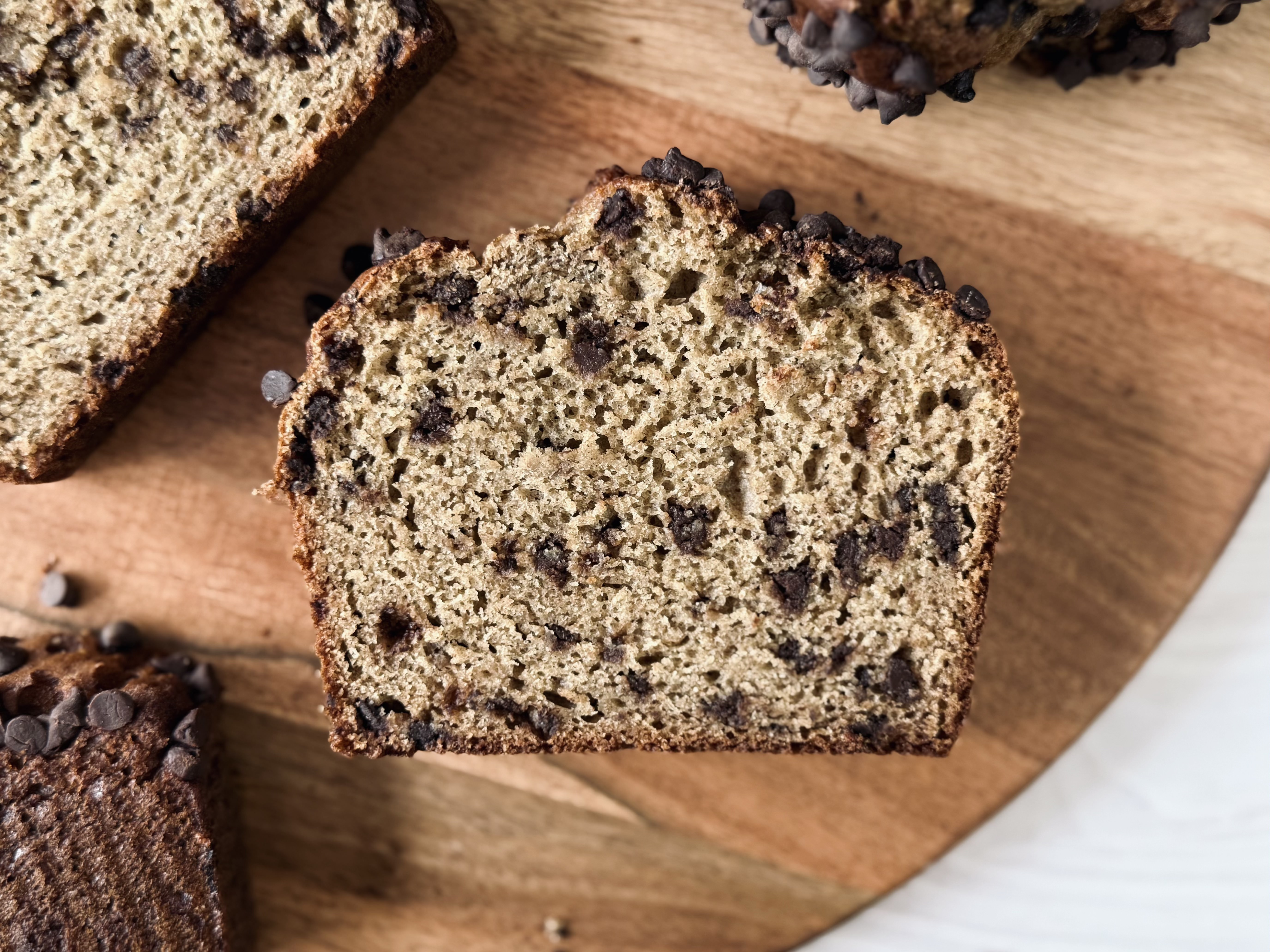
📌 Quick Tip: Read the recipe in its entirety before you start cooking. This will help you understand the ingredients, steps, and timing involved, and allow you to prepare any necessary equipment or ingredients beforehand.
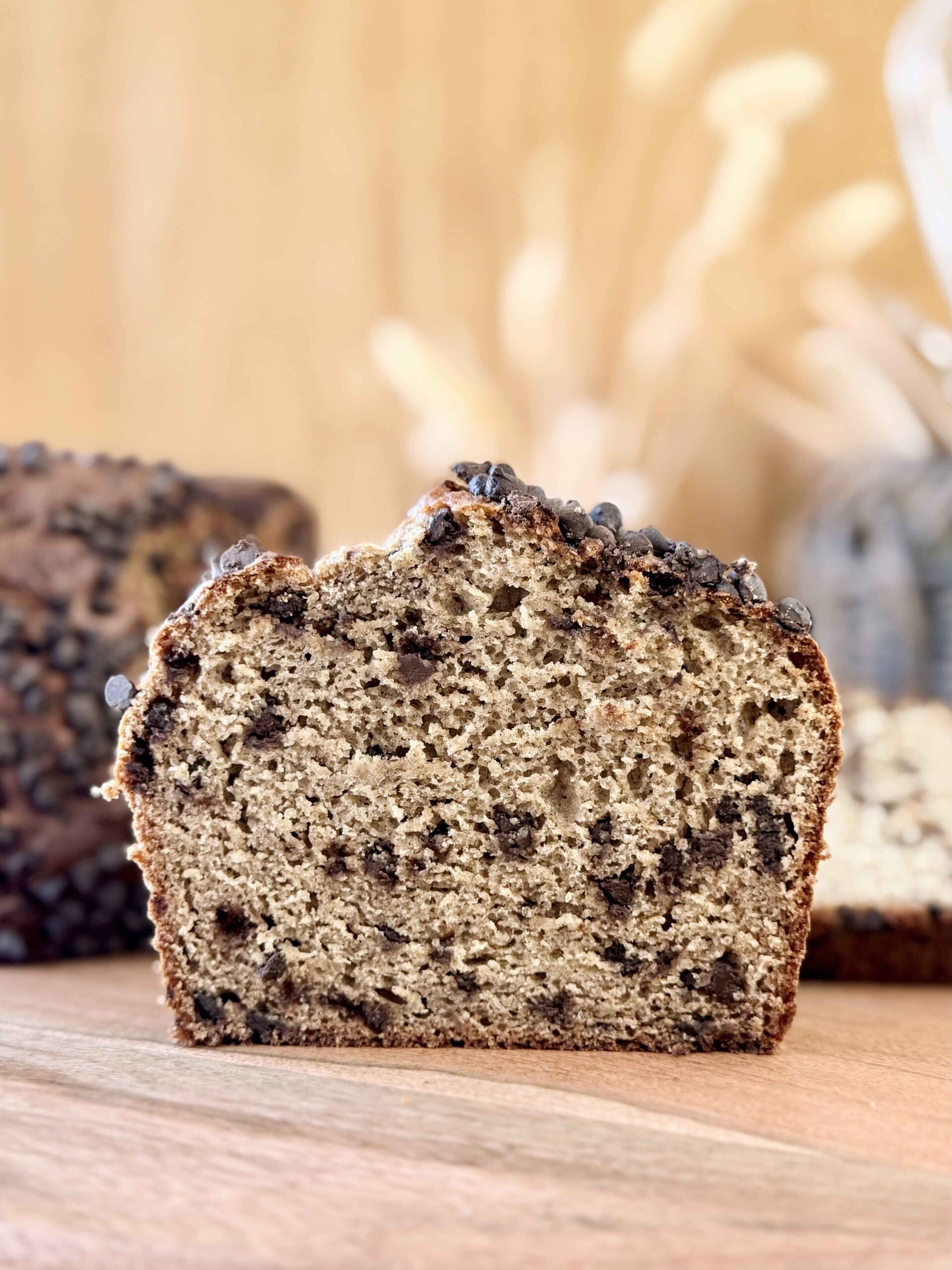
Healthy Cottage Cheese Banana Bread
Ingredients
Instructions
-
Preheat an oven to 350 F (175 C).
-
Grease a 9X5 inch loaf pan and set aside.
-
To a blender, add the bananas, cottage cheese, sourdough discard, and eggs. Blend until smooth.
It's helpful for some blenders if the liquid ingredients (eggs) are on the bottom. -
Next, add the oil, maple syrup, and vanilla extract to the blender. Pulse until incorporated.
-
In a large mixing bowl, sift the flours, baking soda, cinnamon, and salt. Whisk to combine.
-
Pour the wet over the dry ingredients. Stir with a spatula until almost completely mixed.
It's okay for there to still be some dry bits of flour. -
Work in your mix-ins, stirring as little as possible to get them well-distributed.
-
Add all the batter to your loaf pan. Smooth the top out nicely, so that everything bakes evenly.
-
Optionally, garnish the top of your loaf with a handful (or two) more of your mix-in of choice.
-
Bake in your preheated oven for about 50 minutes, or until a toothpick inserted comes out clean.
Do not over-bake. -
Cool for 10-15 minutes, then turn out onto a wire rack to cool completely.
-
Enjoy!
Nutrition Facts
Servings 10
- Amount Per Serving
- Calories 271.07kcal
- % Daily Value *
- Total Fat 9.84g16%
- Saturated Fat 1.25g7%
- Trans Fat 0.03g
- Cholesterol 39.23mg14%
- Sodium 259.12mg11%
- Potassium 245.05mg8%
- Total Carbohydrate 39.87g14%
- Dietary Fiber 3.11g13%
- Sugars 9.78g
- Protein 7.45g15%
- Vitamin A 21.52 mcg
- Vitamin C 3.02 mg
- Calcium 40.4 mg
- Iron 1.88 mg
- Vitamin D 0.21 mcg
- Vitamin E 1.61 mg
- Vitamin K 6.01 mcg
- Thiamin 0.28 mg
- Riboflavin 0.32 mg
- Niacin 2.3 mg
- Vitamin B6 0.22 mg
- Folate 29.67 mcg
- Vitamin B12 0.14 mcg
- Phosphorus 122.2 mg
- Magnesium 38.56 mg
- Zinc 0.91 mg
* Nutrition values are auto-calculated and should be used as an approximation only.

Notes
- Storage: This loaf does not have a long shelf-life. Store on the counter for one to two days, or slice and store in the freezer. No need to reheat, enjoy straight from the counter. From the freezer, allow to come to room temperature before serving.
- Please read the blog post above for substitution options.
